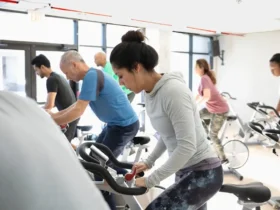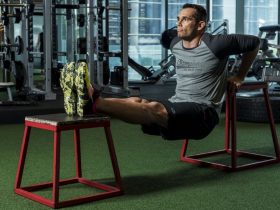Embarking on a fitness journey can be both exciting and overwhelming, especially if you’re new to exercise. With a plethora of workout routines and fitness philosophies out there, it can be difficult to know where to start. One of the most essential aspects of beginning any fitness regimen is understanding how the body responds to exercise and ensuring that the workouts you choose are based on scientific principles for maximum effectiveness and safety.
Beginner workouts are often misunderstood, with many people mistakenly assuming they must dive into intense regimens from day one to see results. However, the key to a successful fitness journey, especially for beginners, lies in progressive and sustainable approaches that cater to the body’s natural adaptation processes. In this article, we’ll break down the science behind beginner workouts, explain how they work, and provide evidence-backed insights into how to design an effective routine.
1. The Science of Muscle Adaptation and Strength Building
When you first start exercising, your body undergoes a series of adaptations to meet the new demands placed on it. The process is rooted in muscle physiology and neural adaptation. In simple terms, your muscles get stronger through a process called muscle hypertrophy, and your nervous system becomes more efficient at coordinating movements. Initially, the focus of beginner workouts is to build a solid foundation of strength, flexibility, and endurance, allowing your body to adapt gradually and safely to more demanding exercises.
Muscle Hypertrophy
Hypertrophy refers to the increase in muscle size that occurs when the fibers of your muscles are subjected to progressive overload. When you lift weights or engage in bodyweight exercises, you create tiny tears in your muscle fibers. During recovery, your body repairs these fibers, making them thicker and stronger. For beginners, light to moderate resistance training is essential to trigger this process without overwhelming the body.
Studies have shown that strength training increases muscle mass and bone density, improving overall health and reducing the risk of osteoporosis as you age. For beginners, working with weights or resistance bands 2-3 times a week can help increase muscle strength and endurance, setting a solid foundation for more advanced training.
Neural Adaptation
In addition to hypertrophy, your nervous system undergoes adaptation during early workouts. Neural adaptation improves the efficiency of the nervous system in recruiting and coordinating muscle fibers. As a result, beginners often experience rapid strength gains in the first few weeks, even before significant muscle growth occurs. This improvement in motor control is why beginners often notice quick improvements in their performance as they learn proper form and technique.
2. The Role of Cardiovascular Health
Incorporating cardiovascular exercise is another key component of beginner workouts. Cardiovascular exercise, also known as aerobic exercise, strengthens the heart, lungs, and blood vessels, leading to improved overall fitness. For beginners, starting with moderate-intensity cardio exercises such as walking, cycling, or swimming can significantly enhance heart health and stamina.
Cardiorespiratory Fitness
Cardiovascular exercise improves cardiorespiratory fitness, which refers to the ability of the heart and lungs to supply oxygen to muscles during sustained physical activity. Research shows that even moderate aerobic exercise can reduce the risk of chronic diseases like hypertension, diabetes, and heart disease. According to the American Heart Association, just 150 minutes of moderate-intensity cardio per week is enough to maintain a healthy heart.
When starting out, aim for low-impact activities such as brisk walking or stationary biking to avoid placing undue stress on your joints. Over time, you can gradually increase the intensity and duration of your cardio workouts, incorporating activities like running, rowing, or dancing.
3. The Importance of Flexibility and Mobility
Flexibility and mobility exercises are often overlooked by beginners, yet they play a crucial role in overall fitness. Stretching and mobility training are not just for increasing flexibility but are key for injury prevention, improving posture, and enhancing performance in strength training and cardio.
Flexibility Training
Scientific studies have demonstrated that static stretching, or the practice of holding a stretch for an extended period, helps lengthen muscles and improve joint flexibility. For beginners, incorporating a few minutes of stretching at the beginning or end of a workout can improve range of motion, reduce muscle tightness, and decrease the risk of injury.
Dynamic stretching, on the other hand, involves moving muscles and joints through their full range of motion before a workout. This type of stretching increases blood flow and prepares the body for more intense movement. Both forms of flexibility training should be included in a well-rounded beginner workout routine.
Mobility Exercises
Mobility exercises focus on improving joint movement, particularly in the hips, shoulders, and spine. These exercises help to maintain functional movement patterns and reduce stiffness. Simple movements such as shoulder circles, hip openers, or ankle rolls can significantly improve joint health and support strength training efforts.
4. Progressive Overload and Rest: The Key to Sustainable Progress
One of the cornerstones of effective beginner workouts is the principle of progressive overload. This concept refers to gradually increasing the demands placed on your muscles to promote growth and strength. For beginners, this means starting with manageable weights or resistance levels and progressively increasing them as your body adapts. Progressive overload can be achieved by increasing the intensity (e.g., adding more weight), frequency (e.g., adding an extra workout session), or volume (e.g., doing more sets or reps).
Rest and Recovery
Rest is just as important as the exercise itself. When you work out, you are essentially breaking down muscle tissue. It’s during the recovery phase that your body repairs and rebuilds these muscles, making them stronger. This recovery process is essential for long-term progress.
Studies have shown that adequate rest is necessary for muscle repair and to prevent overtraining, which can lead to burnout or injury. Beginners should aim to take rest days between strength training sessions to allow muscles to recover fully. Active recovery, such as light stretching or yoga, can be beneficial on rest days to promote blood flow and flexibility.
5. Designing a Beginner Workout Routine: A Balanced Approach
For beginners, it’s essential to strike a balance between strength training, cardiovascular exercise, and flexibility work. A well-rounded routine should incorporate each of these elements to ensure overall fitness and reduce the risk of injury. Here’s a basic beginner workout routine based on scientific principles:
Strength Training (2-3 Days per Week)
-
Focus on full-body exercises that engage multiple muscle groups, such as squats, lunges, push-ups, and rows.
-
Start with bodyweight exercises to build foundational strength, then gradually add resistance through dumbbells or resistance bands as you progress.
-
Begin with 2-3 sets of 8-12 reps per exercise, with 1-2 minutes of rest between sets.
Cardiovascular Exercise (3-5 Days per Week)
-
Aim for 20-30 minutes of moderate-intensity cardio per session. Walking, cycling, and swimming are great options for beginners.
-
For those who prefer higher-intensity workouts, consider interval training, where short bursts of high-intensity exercise are alternated with recovery periods. This can help improve both aerobic capacity and fat-burning.
Flexibility and Mobility (Daily)
-
Incorporate stretching and mobility exercises into your routine, especially after workouts, to maintain flexibility and support recovery.
-
Include both static stretches (such as hamstring stretches or quad stretches) and dynamic stretches (like leg swings or arm circles) to promote joint health and muscle recovery.
6. Staying Consistent and Tracking Progress
One of the most critical aspects of a beginner workout routine is consistency. The science is clear: regular exercise leads to lasting benefits for both the body and the mind. Setting small, achievable goals and tracking progress can help keep you motivated and focused.
Begin by documenting your workouts in a journal or fitness app, noting how you feel after each session, and gradually increase the intensity as you build strength. Tracking your progress can provide tangible evidence of your improvement, which can be incredibly motivating as you continue on your fitness journey.
Conclusion
Understanding the science behind beginner workouts can help you create an exercise routine that is not only effective but also sustainable. By focusing on gradual progression, balancing strength training, cardiovascular exercise, and flexibility, and allowing your body the time it needs to adapt and recover, you can build a solid foundation for long-term fitness success. Remember, the key to fitness is consistency and patience. As you continue to progress, your body will adapt, and you’ll find yourself reaching new levels of strength, endurance, and overall health.









